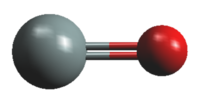|
The data set has been greatly extended with respect to
the first entry from December 2000. The fit and the data set
have been described in
(1) H. S. P. Müller, S. Spezzano, L. Bizzocchi, C. A.
Gottlieb, C. Degli Esposti, and M. C. McCarthy,
2013, J. Phys. Chem. A 117, 13843.
Additional rotational data were taken from
(2) M. E. Sanz, M. C. McCarthy, and P. Thaddeus,
2003, J. Chem. Phys., 119, 11715;
from
(3) R. Mollaaghababa, C. A. Gottlieb, J. M. Vrtililek,
and P. Thaddeus,
1991, Astrophys. J. 368, L19;
and from
(4) S.-H. Cho and S. Saito,
1998, Astrophys. J. 496, L51.
Infrared transitions were also used in the fit. These
were reported by
(5) F. J. Lovas, A. G. Maki, and W. B. Olson,
1981, J. Mol. Spectrosc. 87, 449;
and by
(6) J. M. Campbell, D. Klapstein, M. Dulick, P. F. Bernath,
and L. Wallace,
1995, Astrophys. J. Suppl. Ser. 101, 237.
Predictions with uncertainties larger than 300 kHz
should be viewed with some caution. They may, however,
still be reasonable up to at least J = 100
because of the extensive IR data.
The partition function is fully converged up to 2000 K.
The equilibrium dipole moment and its first order vibrational
correction was taken from
(7) J. W. Raymonda, J. S. Muenter, and W. A. Klemperer,
1970, J. Chem. Phys. 52, 3458.
A first order rotational correction of 6.4 μD
was estimated from Einstein A values reported
in
(8) E. J. Barton, S. N. Yurchenko, and J. Tennyson,
2013, Mon. Not. R. Astron. Soc. 434, 1496.
This correction is negligible below 1 THz; it reaches
the one percent level slightly below J = 50.
The agreement between rotationless dipole moments derived
from (7) and the values in (8) is very good; the equilibrium
value in (8) is marginally smaller, the first order vibrational
correction marginally smaller. The small deviations are
compatible with the uncertainties in (7), uncertainties in
(8) may also contribute. A higher order rotational correction
to the dipole moment may show up in the v = 0
data, but is well below the one percent level throughout.
The derived A values at higher v are compatible
with the rotational correction mentioned above; very small
deviations appear to be somewhat irregular. Even though the
reliability of the distortion correction to the dipole moment
is difficult to judge, only slight caution is advised for the
intensities of transitions with J above 100.
|
